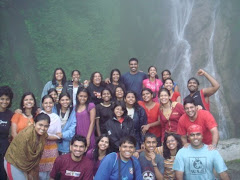A great Trans-Himalayan river, it is one of the longest rivers in the world with an astonishing length of 2900 km. Rising in south-western Tibet, at an altitude of 16,000 feet, Sindhu enters the Indian territory near Leh in Ladakh. Its annual flow of 272 billion cu yd (207 billion cu m) is twice that of the Nile. The river has total drainage area of about 4,50,000 square miles, of which 1,75,000 square miles, lie in the Himalayan mountains and foothills. After crossing into the Kashmir region, it continues northwestward through the Indian- and Pakistani-administered areas and then turns south into Pakistan. Swelled by tributaries from the Punjab region, including the Jhelum, Chenab, Ravi, Beas and Sutlej rivers, it widens and flows more slowly. The river's name comes from Sanskrit word 'Sindhu'. It is mentioned in the Rig Veda, the earliest (c. 1500 BC) chronicles and hymns of the Aryan people of ancient India, and is the source of the country's name. Words like Hindu, Hindustan and India have been derived from Sindhus and 'Indus', the name given to Sindhu by foreigners. The Veda is ecstatic about the Indus, the cradle of Indian civilization. "Sindhu in might surpasses all the streams that flow…His roar is lifted up to heaven above the earth; it puts forth endless vigour with a flash of light… Even as cows with milk rush to their calves, so other rivers roar into the Sindhu. As a warrior king leads other warriors, so does Sindhu lead other rivers… Rich in good steeds is Sindhu, rich in gold, nobly fashioned, rich in ample wealth." A number of Buddhist stupas are found on the banks of the River Indus. According to legend Lord Buddha traversed the banks of this river accompanied by bhikshus.
In Tibet, its name is Sengge, the Lion River. According to Tibetan mythology, the river issues from the mouth of a snow-lion, milk-white with a turquoise mane. Other legends claim it arises in the holy lake of Mansarovar. Sven Hedin, the Swedish explorer who discovered the true source of the Indus in 1907, found it was neither snow nor lake. He "saw the Indus emerge from the lap of the earth", a perennial spring behind the sacred mountain Kailash.
From Ladakh, it crosses the Line of Control (LoC) into Pakistan, cliffs and pine forests, rice terraces and orchards streaming past this single-minded ribbon of blue-grey, which cuts through rock at places almost 400 metres deep. Haramosh, Gilgit, Astor, Kabul: no mountain river in northern Pakistan, in northwest India and eastern Afghanistan can resist its magnetism, their diamond waters fluting down into the Indus, a vast liquid family tree. The Pathans call it Abbaseen, Father of Rivers.
With Partition in 1947, water was partitioned too. The Inter-Dominion Accord of 1948, and later, the Indus Waters Treaty of 1960, awarded control of the three eastern rivers — the Ravi, the Beas and the Sutlej — to India, and that of the three western ones — the Indus, the Jhelum and the Chenab — to Pakistan.
Once the Indus has run down the plains of Punjab and digested the Panjnaad — the union of the five Punjabi rivers — it pours itself down the length of Sindh, bisecting it. Sindh lies outside the domain of the South-West monsoon — its annual rainfall is a laughable seven inches — and the Mitho Dariyo, the sweet river, is the only source of water. The people had long learnt to tap its waters through an intricate network of canals dripping down the map of Sindh, an irrigation system found nowhere else in India.
But this is more than mere water. Now it floods ripe harvests, now it abandons towns perched on its banks only to create prosperity elsewhere, willfully changing the course of history. Mohenjodaro, Alor, Thatta were all cities created and then killed by Dariya Shah. It conjures up crops and livestock, its fish are its generous fruit; it is a road to travel on, a deity to be worshipped. Everything comes from the Sindhu: the land, the people, the god Jhulelal, and an entire way of life.
It was the British who first looked at the river as inanimate water, merely to be exploited; in 1932 they built the Sukkur Barrage, one of the biggest in the world. More dams and barrages were built after Independence, diverting much water to Baluchistan, the North West Frontier Province (NWFP), and mainly Punjab, draining the Indus.
The Indus carries a vast amount of silt, more than any other river in South Asia, a double gift to the farmers on its banks. Since 1995, there has been less run-off in the mountains and the Indus has shrunk. There is less water to be shared, and appalling water-cuts leading to a battle between the provinces of Sindh and Punjab. Sindh is incensed that Punjab will comfortably store water in its dams, while downstream, the canals are bone-dry and villagers must walk miles just for drinking water. Diseases flourish; the river dolphin has become an endangered species; fishermen migrate to the coast in search of livelihoods. Punjab claims that its crops also suffer, but there the ground water is sweet and plentiful, while in Sindh it is saline and useless.
The Sindhu Dariya — simultaneously Sanskrit and Persian for "ocean" — ends its 2,900 km life in the dishevelled strands of its delta east of Karachi. The levels of water and silt flowing into the Arabian Sea have plummeted over the years; salinity has spiralled. Almost half the mangroves in the delta have vanished, and with them, their fish and marine life. Finally, the sea is taking over, making inroads into the land, swallowing up farms, rendering people homeless. Punjab wants yet another dam on the Indus, at Kalabagh.
Subscribe to:
Post Comments (Atom)

No comments:
Post a Comment